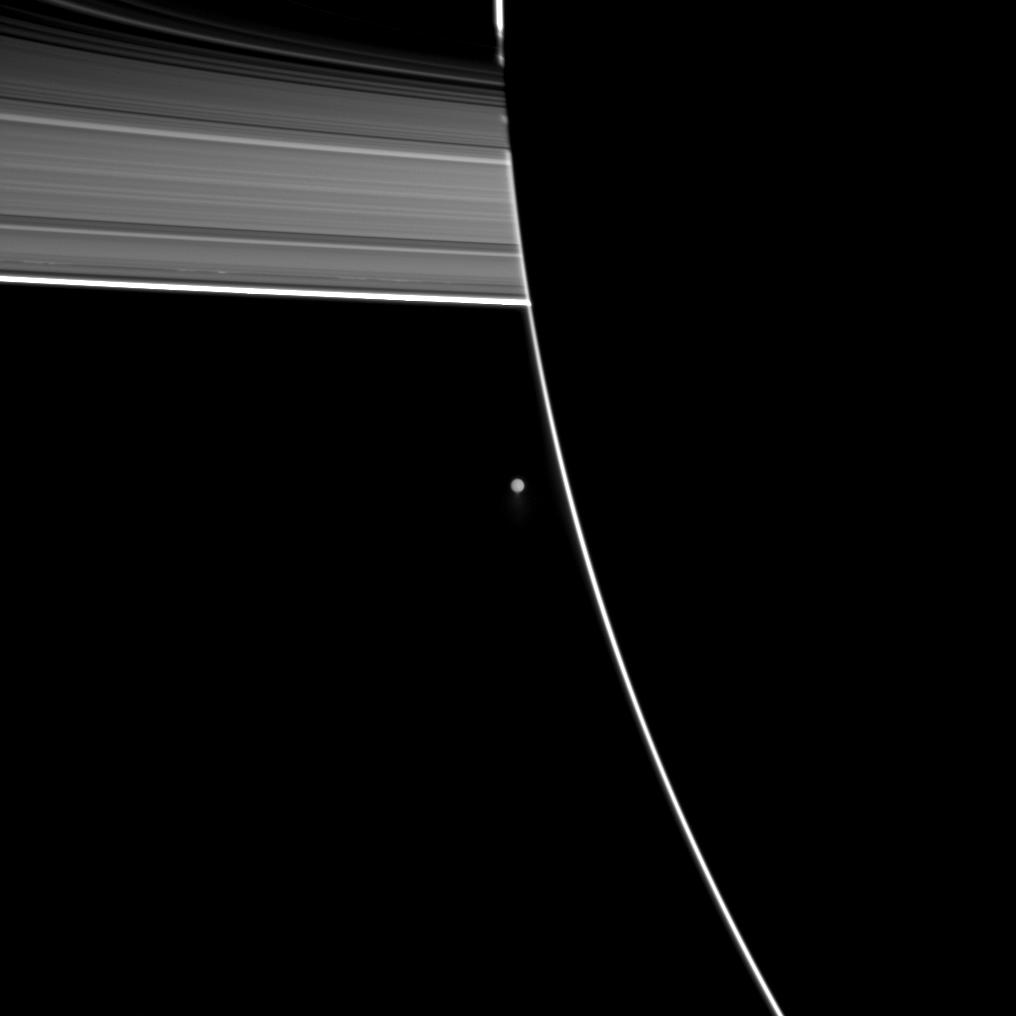Activity Past Dark Side

| PIA Number | PIA12705 |
|---|---|
| Language |
|
Saturn's moon Enceladus, seen beyond the outline of the planet's night side, spews water ice from its south polar region.
Enceladus is farther from Cassini than the planet is here. The plumes can be faintly seen at the bottom of the moon in this image. See Bursting at the Seams to learn more about Enceladus (504 kilometers, or 313 miles across).
This unusual view of the planet and rings is possible because some sunlight scatters through the uppermost part of Saturn's atmosphere to reach Cassini's cameras on the night side of the planet. See High-Phase Drama for an explanation of this viewing geometry.
This view looks toward the southern, unilluminated side of the rings from about 5 degrees below the ringplane.
Enceladus and its plumes have been brightened by a factor of two relative to the planet and rings.
The image was taken in visible light with the Cassini spacecraft wide-angle camera on Dec. 25, 2009. The view was acquired at a distance of approximately 617,000 kilometers (384,000 miles) from Enceladus and at a sun-Enceladus-spacecraft, or phase, angle of 174 degrees. Image scale is 37 kilometers (23 miles) per pixel.
The Cassini-Huygens mission is a cooperative project of NASA, the European Space Agency and the Italian Space Agency. The Jet Propulsion Laboratory, a division of the California Institute of Technology in Pasadena, manages the mission for NASA's Science Mission Directorate, Washington, D.C. The Cassini orbiter and its two onboard cameras were designed, developed and assembled at JPL. The imaging operations center is based at the Space Science Institute in Boulder, Colo.
For more information about the Cassini-Huygens mission visit http://saturn.jpl.nasa.gov . The Cassini imaging team homepage is at http://ciclops.org .
Credit: NASA/JPL/Space Science Institute
